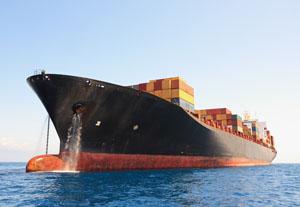Detecting and monitoring aquatic invasive species
 The introduction and spread of aquatic organisms in regions outside their native range has raised major environmental, economic and public health concerns. These aquatic invasive species (AIS) pose significant economic burdens and are considered the second greatest threat to biological diversity, ranking just below habitat loss. Two recent studies of damages caused by AIS in the Great Lakes region estimated an aggregate annual cost significantly more than $100 million. The ecological and social welfare impacts of invasive species make them a critical concern for environmental protection. (See Invasive Species)
The introduction and spread of aquatic organisms in regions outside their native range has raised major environmental, economic and public health concerns. These aquatic invasive species (AIS) pose significant economic burdens and are considered the second greatest threat to biological diversity, ranking just below habitat loss. Two recent studies of damages caused by AIS in the Great Lakes region estimated an aggregate annual cost significantly more than $100 million. The ecological and social welfare impacts of invasive species make them a critical concern for environmental protection. (See Invasive Species)
Ballast water exchange has been recognized as a critical pathway for aquatic biological invasions. Water has long been used as a ballast to stabilize ships at sea. While ballast water is essential for safe ship operation, it may pose environmental problems due to the numbers of marine species carried in ships’ ballast water. These include bacteria, microbes, small invertebrates, eggs, cysts and larvae of various species, which can become established and multiply in their new environment, even out-competing native species.
More research is needed to understand the risks associated with non-native species transported through ballast water, and in other ways such as attachment of aquatic organisms to ship hulls, the release of organisms from aquaculture operations, and accidental or intentional species introductions. To prevent the spread of invasive species, states and regions need state-of-the-science tools that are able to detect them at very low densities before they become widely established.
In the Great Lakes region, EPA is helping to develop guidance on state-of-the-science early detection methods to enable cost effective monitoring of AIS — even at very low population densities. This includes development and assessment of DNA-based tools, including Next Generation Sequencing technologies, which have the potential to provide highly sensitive, specific, rapid and inexpensive approaches for recognizing the presence of invasive species very early after introduction. (See Development of Next-Generation DNA Sequencing Techniques to Improve and Advance Environmental Monitoring and Bioassessment)
EPA scientists have also conducted extensive research to reconstruct the invasion histories of multiple invasive species in coastal systems. Using genetic methods, EPA scientists have inferred the most likely sources of high impact invasions and the most likely ways that specific AIS have spread through a region.
Robust and cost effective tools for early detection and monitoring are a critical need in efforts to prevent future invasions of invasive species, as well as the further spread of existing AIS. EPA has become a leader in the field of DNA-based monitoring of AIS, both through technology development and by providing guidance on appropriate integration of DNA-based tools into advanced monitoring programs. Further efforts in this area will inform the establishment of a Great Lakes AIS monitoring system that has the potential to substantially reduce the risk of future AIS spread.
EPA has also developed an internationally recognized research program in the application of genetic tools for understanding the spread of AIS. Results of this research have provided insights into the most important vectors of AIS spread within and between regions in the United States — insights which will inform AIS policy and assist in prioritization of management efforts.
Related Links:
- More on Invasive Species
- DNA research to support biological assessments
- EPA & Notre Dame collaborate study invasive species
- EPA Great Lakes region research
- Great Lakes Water Quality Agreement
- Clean Boating Act
- Ecological Exposure Research: Water
